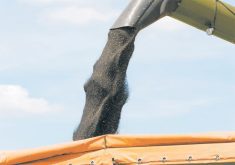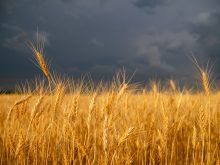Seeded acreage projections for the coming crop year are all over the map with producers in different regions often holding opposing views on what crops will be popular this spring.
The Market Analysis Group of Agriculture Canada released acreage predictions on Jan. 21. This group does not have a particularly strong record for accuracy, but their numbers can be a starting point for discussion.
Agriculture Canada is calling for the following acreage changes from last year: durum, up nine percent; wheat (except durum), up five percent; barley, down two percent; oats, up eight percent; canola, down three percent; flax, down three percent; soybeans, up seven percent; field peas, up seven percent and lentils, up three percent.
Read Also

Downturn in grain farm economics threatens to be long term
We might look back at this fall as the turning point in grain farm economics — the point where making money became really difficult.
When I threw these numbers out on Twitter and asked for feedback, the barley prediction was among the most contentious.
In 2021, barley acreage was at a 12-year high. Many growers in Saskatchewan believe the drop will be far greater than the two percent Agriculture Canada is forecasting. They cite poor barley yields in 2021 as compared to wheat as the reason.
The view seems to be different in the major barley-growing areas of Alberta, where proximity to feedlot alley and some major malting facilities are generating new crop bids that growers find attractive. Some are reporting that popular new barley varieties are sold out.
It’s possible that barley acreage will drop substantially in many parts of Saskatchewan while acreage goes the opposite direction in Alberta.
As for oats, the general consensus is that acreage will indeed increase. It’s just a question of how much.
Durum is another crop where an acreage increase seems likely. While Agriculture Canada predicts that the durum price premium over spring wheat will decline, it is still forecast to be significant. Its nine percent acreage increase looks plausible and in areas adapted to producing durum, some of that increase will come at the expense of barley.
The forecast for wheat other than durum to increase by five percent seems a bit high given the competition for acres. Canola prices are riding high and yet canola acreage is predicted to drop three percent.
Flax is another crop that has seen amazing prices and yet flax acreage is predicted to decline three percent. If this proves accurate, it makes one wonder what sort of price would be necessary to stimulate more acres.
Many are surprised by the seven percent increase forecast for soybean acreage. While prices are strong, the crop doesn’t seem to pencil out as well as many others in Manitoba and eastern Saskatchewan. However, soybeans are one of three major crops in Ontario and an increase in acreage there could more than counterbalance a prairie decrease.
A seven percent increase in peas is a bit surprising, given that peas don’t seem as profitable as some other options. Some may seed peas to avoid the high cost of nitrogen fertilizer, but on the other hand, it’s a waste to seed peas where the soil has high residual levels of nitrogen from cereal and oilseed crops that underperformed due to dry conditions in 2021.
Acreage may still be influenced by new crop prices that emerge or fertilizer prices that may start to ratchet down. However, many producers have finalized their 2022 seeding plan and are unlikely to change.
Given the multitude of factors involved this year and the regional differences in relative crop profitability, expect some seeded acreage surprises when the final numbers are known.
Kevin Hursh is an agricultural journalist, consultant and farmer. He can be reached by e-mail at kevin@hursh.ca.


















